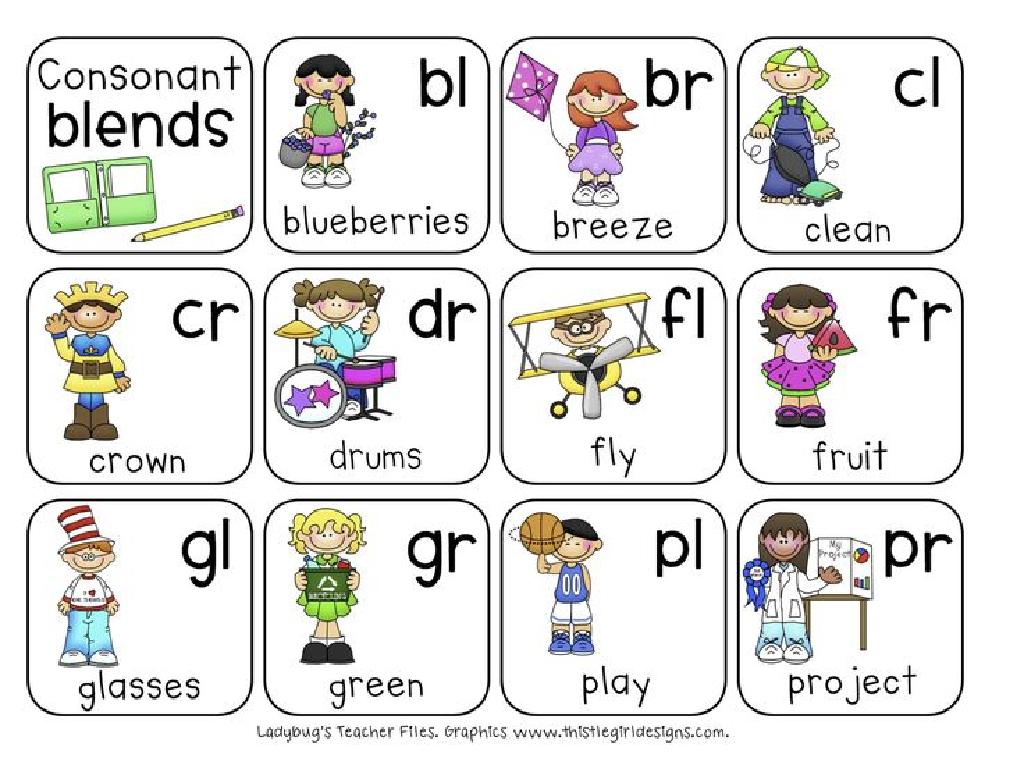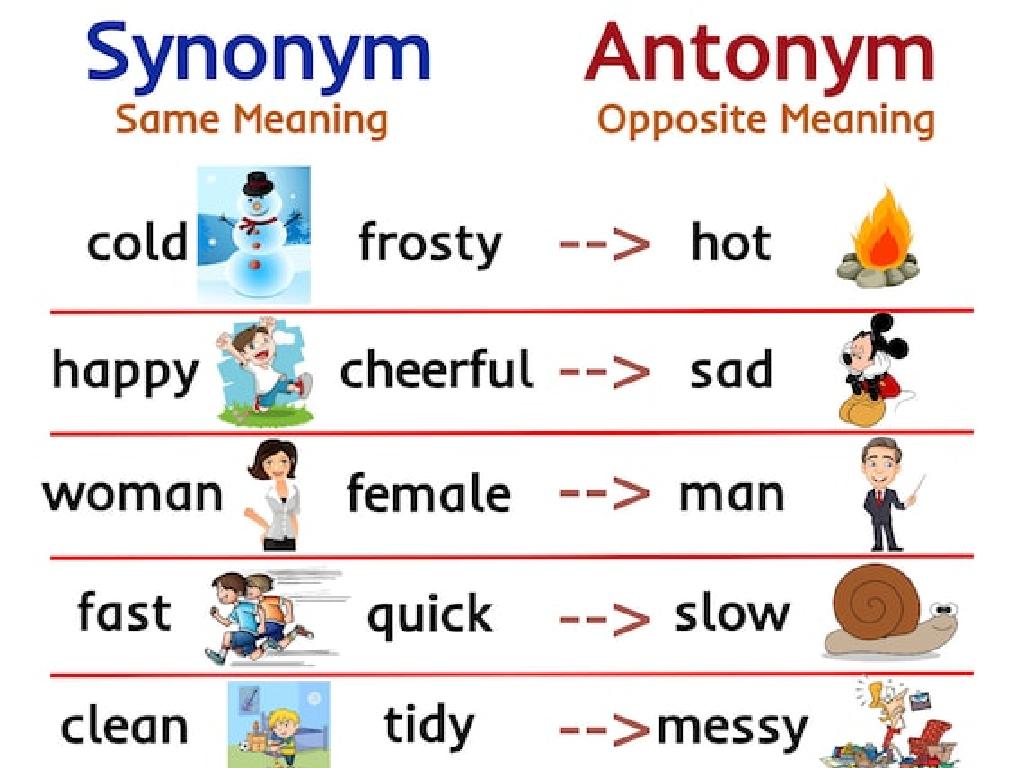Identify An Outlier And Describe The Effect Of Removing It
Subject: Math
Grade: Eighth grade
Topic: One-Variable Statistics
Please LOG IN to download the presentation. Access is available to registered users only.
View More Content
Understanding Outliers in Statistics
– What are statistics?
– Defining outliers
– Outliers are data points that differ significantly from others.
– Impact of outliers on data
– Outliers can skew mean and median, affecting data interpretation.
– Analyzing data without outliers
– Learn to recalculate statistics without outliers for accuracy.
|
This slide introduces the concept of outliers within the context of one-variable statistics. Begin by explaining the basics of statistics as a tool for collecting, analyzing, interpreting, presenting, and organizing data. Then, define outliers as data points that stand out from the rest of the data set due to their extreme values. Discuss how these outliers can have a significant impact on statistical measures like the mean and median, potentially leading to misleading conclusions. Finally, demonstrate how to analyze data sets by recalculating statistical measures without the outliers to ensure a more accurate representation of the data. Provide examples of data sets with and without outliers to illustrate the concept clearly.
Understanding Outliers in Statistics
– Define an outlier
– An outlier is a data point that differs significantly from other observations.
– Outliers in real-life data
– Examples: Ages at a middle school dance, or heights in a second-grade class.
– Significance of outlier detection
– Identifying outliers helps ensure accurate data analysis.
– Impact of removing outliers
– Removing outliers can change the mean and standard deviation of the data set.
|
This slide introduces the concept of outliers in the context of one-variable statistics. An outlier is a value that is significantly higher or lower than most of the data. Real-life examples, such as ages at a school dance, can illustrate how an outlier can skew perceptions. It’s crucial for students to understand why outliers need to be identified often to ensure the validity of statistical calculations. Discuss the effects of removing outliers, such as changes to the mean, which can sometimes lead to more representative measures of central tendency. Encourage students to think critically about when it is appropriate to remove an outlier.
Understanding Outliers in Statistics
– Outliers due to data entry errors
– Mistyped numbers or misplaced decimal points
– Outliers from measurement errors
– Inaccurate measurements or equipment faults
– Outliers caused by sampling errors
– Biased samples or selection mistakes
– Natural deviation outliers
– Unusual but true values in data sets
|
This slide aims to educate students on the various causes of outliers in statistical data. Outliers can arise from human errors such as incorrect data entry or measurement mistakes due to faulty equipment. Sampling errors occur when the data collected does not represent the entire population accurately, often due to biased sampling methods. Lastly, natural deviation outliers are genuine data points that are significantly different from the rest of the data set. Understanding these causes is crucial for students to correctly identify outliers and assess their impact on data analysis. Discuss the importance of scrutinizing outliers to determine if they should be included in the data set or removed, and the potential effects of such decisions on the results of the analysis.
Detecting Outliers in Data
– Spot outliers with graphs
– Use box plots to visualize data points far from others
– Learn the 1.5 IQR Rule
– If a data point is more than 1.5 times the IQR above Q3 or below Q1, it’s an outlier
– Understand Standard Deviation
– Outliers are points more than 2 standard deviations from the mean
– Effects of removing outliers
– Removing outliers can change the dataset’s mean and standard deviation
|
This slide introduces methods for identifying outliers in statistical data, crucial for accurate analysis. Outliers can significantly skew results, so it’s important for students to learn how to detect them. Graphical methods like box plots provide a visual cue for spotting outliers. The 1.5 IQR Rule is a mathematical approach to defining outliers based on the interquartile range. The Standard Deviation Method considers data points that are far from the mean. Discuss the impact of outliers on statistical measures and the potential effects of removing them, such as changes in the mean and standard deviation, which can alter the interpretation of data. Encourage students to practice these methods with example datasets to solidify their understanding.
Impact of Outliers on Statistics
– Outliers’ effect on central tendency
– An outlier can skew mean values, less effect on median/mode.
– Outliers influence on data interpretation
– Outliers can distort the overall picture of the data set.
– Criteria for removing outliers
– Remove if error or if it significantly skews data.
– Case study: Outlier impact analysis
– Example: Exam scores with/without outlier.
|
This slide aims to educate students on how outliers can affect statistical measures and data interpretation. Outliers are extreme values that differ significantly from other observations. They can have a profound impact on the mean, pulling it towards the outlier’s value, while the median and mode are more resistant to such changes. Students should learn how to identify outliers and understand when it is appropriate to remove them, such as in cases of data entry errors or when they are not representative of the population. Use a case study, such as exam scores, to illustrate the effect of an outlier on the class average and how removing it can change the data’s interpretation. Encourage students to think critically about the implications of outliers in real-world data sets.
Impact of Removing Outliers in Data
– Steps to identify outliers
– Use methods like IQR or Z-score to detect outliers.
– Recalculate statistics without outliers
– Find new mean, median, and mode after outlier removal.
– Interpret changes in data
– Analyze how the summary statistics change.
– Understand effects on mean, median
– Mean can shift dramatically; median less so.
|
This slide aims to educate students on the process and implications of removing outliers from a data set. Outliers can significantly skew the results of statistical analysis. Students should learn how to identify outliers using interquartile range (IQR) or Z-scores, which are common methods in statistics. After identifying and removing outliers, students will recalculate the mean, median, and mode to see how these summary statistics are affected. It’s crucial for students to understand that while the mean is sensitive to outliers and can change significantly, the median is more robust and may not show a dramatic shift. This understanding will help them interpret data more accurately in real-world scenarios.
Class Activity: Find the Outlier
– Identify outliers in data sets
– Discuss outlier impacts with a peer
– How does removing an outlier change the mean?
– Share findings with the class
– Understand outlier effects on statistics
– Outliers can skew data, affecting mean and range
|
This activity is designed to help students understand the concept of outliers in statistical data sets. Provide each student with a different set of data and ask them to identify any numbers that seem unusually high or low compared to the others. Encourage them to discuss with a classmate how they think the outlier affects measures of central tendency like the mean and median. Afterward, facilitate a class discussion where students share their findings and reflect on how outliers can skew the results of data analysis. Possible activities include comparing data sets with and without outliers, calculating the mean and median of these sets, and discussing how the presence of an outlier can lead to misleading conclusions.
Outliers: Conclusion & Homework
– Recap on outliers in statistics
– Outliers’ impact on data analysis
– Homework: Find a real-world outlier
– Look for an outlier in news or studies
– Describe the outlier’s impact
– Explain how the outlier affects the overall data
|
This slide wraps up our discussion on the significance of outliers in statistical analysis. Outliers can greatly influence the results of data analysis, potentially skewing averages and other statistical measures. For homework, students are tasked with finding an outlier in a news article or study. They should describe the outlier and critically analyze its impact on the data set. This exercise will help them understand the practical implications of outliers in real-world scenarios. Encourage students to consider how the removal of the outlier might change the conclusions drawn from the data.





